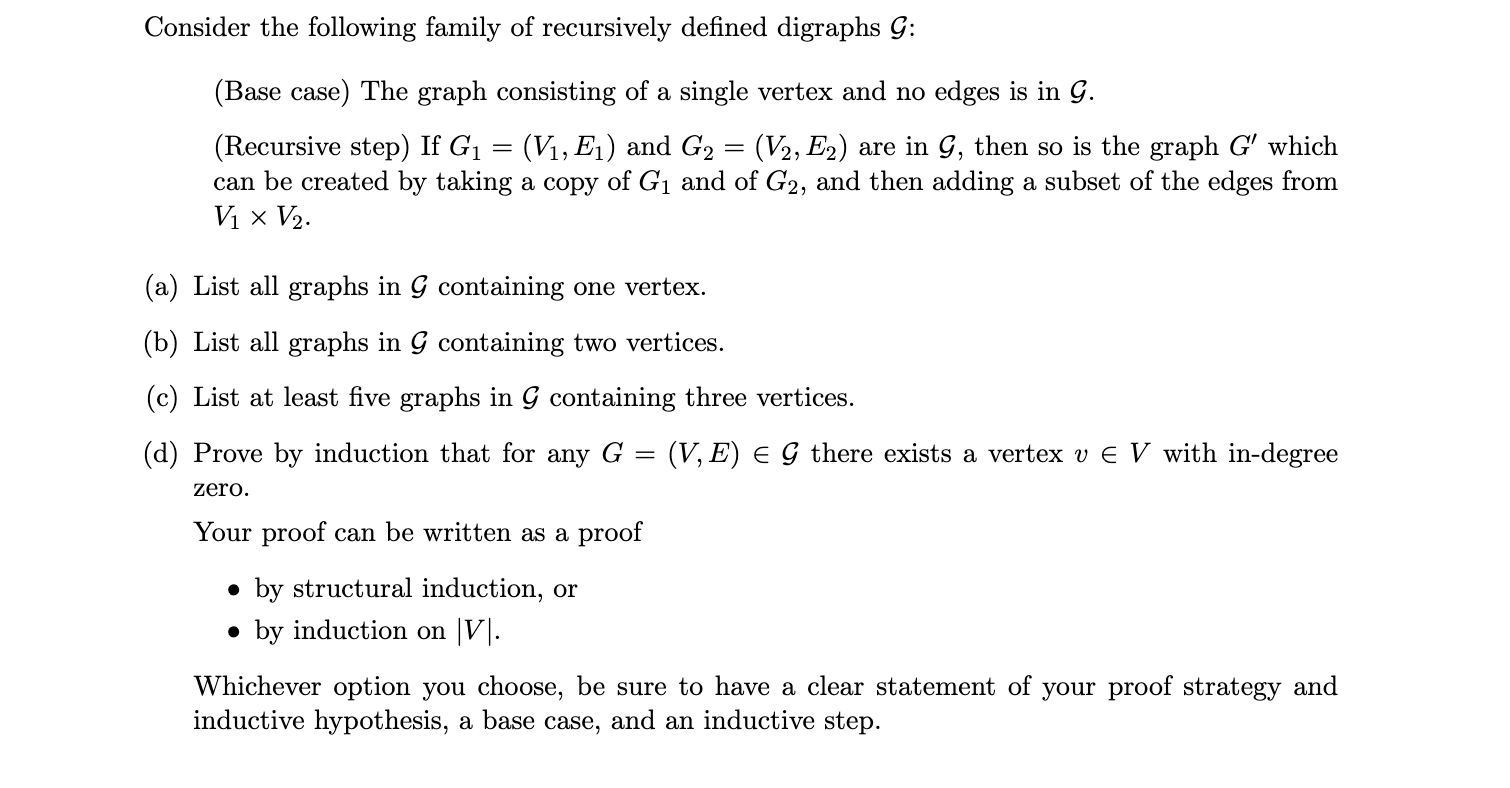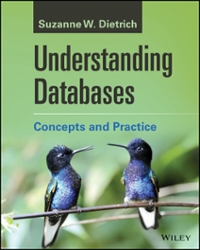Answered step by step
Verified Expert Solution
Question
1 Approved Answer
. Consider the following family of recursively defined digraphs G : (Base case) The graph consisting of a single vertex and no edges is in

.
Consider the following family of recursively defined digraphs G : (Base case) The graph consisting of a single vertex and no edges is in G. (Recursive step) If G1=(V1,E1) and G2=(V2,E2) are in G, then so is the graph G which can be created by taking a copy of G1 and of G2, and then adding a subset of the edges from V1V2 (a) List all graphs in G containing one vertex. (b) List all graphs in G containing two vertices. (c) List at least five graphs in G containing three vertices. (d) Prove by induction that for any G=(V,E)G there exists a vertex vV with in-degree zero. Your proof can be written as a proof - by structural induction, or - by induction on V. Whichever option you choose, be sure to have a clear statement of your proof strategy and inductive hypothesis, a base case, and an inductive stepStep by Step Solution
There are 3 Steps involved in it
Step: 1

Get Instant Access to Expert-Tailored Solutions
See step-by-step solutions with expert insights and AI powered tools for academic success
Step: 2

Step: 3

Ace Your Homework with AI
Get the answers you need in no time with our AI-driven, step-by-step assistance
Get Started


